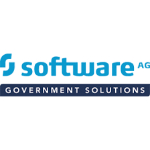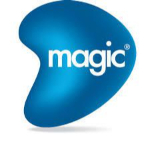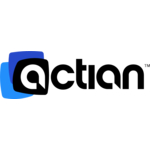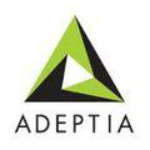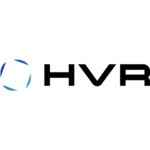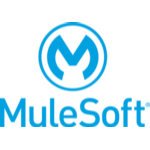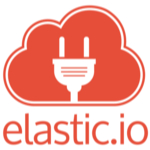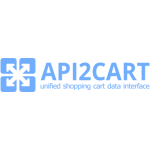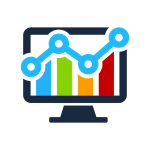TechnologyCounter provides genuine, unbiased real user reviews to help buyers make informed decisions. We may earn a referral fee when you purchase through our links, at no extra cost to you.
List of 15 Best Application Integration Tools
Showing 1 - 15 of 25 productsSoftware AG is a leading provider of innovative software solutions for businesses across industries. With over 50 years of experience, our company has become a trusted partner for digital transformation and process optimization. From integration and...Read Software AG Reviews
Magic is a latest software that brings enchantment to your fingertips. With its innovative technology, Magic allows you to harness the power of spells and incantations to create a truly mesmerizing experience. From casting illusions to unlocking hidd...Read Magic Reviews
Apigee Edge is a API management platform that enables businesses to easily design, deploy, and manage their APIs. With its robust features interface, Apigee Edge streamlines API development and facilitates seamless integration, making it the go-to ch...Read Apigee Edge Reviews
Actian X is a software solution designed to optimize data management and unleash the full potential of cloud and hybrid environments. With unparalleled speed, scalability, and simplicity, Actian X empowers businesses to make smarter decisions, faster...Read Actian X Reviews
Dell Boomi is a highly versatile and innovative software that connects various business applications, systems, and processes, making it easier for organizations to automate and streamline their operations. With its cloud-based integration platform, D...Read Dell Boomi Reviews
Adeptia Connect is a versatile, user-friendly integration software that streamlines business operations and optimizes data flow. With its intuitive interface and robust capabilities, Adeptia Connect simplifies complex processes and enables seamless c...Read Adeptia Connect Reviews
Celigo is a software designed to streamline and optimize your business operations. With its advanced features and seamless integrations, Celigo offers a seamless is a solution for all your business needs. It empowers you to save time, increase produc...Read Celigo Reviews
Fivetran HVR is a top-of-the-line data integration solution that streamlines and automates the process of moving data from various sources to your destination. With its user-friendly interface features, Fivetran HVR simplifies data integration and en...Read Fivetran HVR Reviews
Anypoint by MuleSoft a powerful and innovative integration platform that enables seamless connectivity between applications, data, and devices. With its advanced capabilities, Anypoint simplifies the process of building and managing integrations, all...Read Anypoint by MuleSoft Reviews
Talend Big Data is a and innovative software designed to help businesses unlock the full potential of their data. With its user-friendly interface features, Talend Big Data makes it possible to easily integrate, cleanse, and analyze large volumes of...Read Talend Big Data Reviews
elastic.io is a platform that connects all your applications seamlessly. Say goodbye to manual data transfers and complex integrations. With elastic.io, you can automate workflows, save time, and boost efficiency. Experience a new level of connectivi...Read elastic.io Reviews
ZapUp is a solution for streamlining your business operations! This innovative software is designed to effortlessly manage tasks, projects, and collaboration among team members. With its user-friendly interface and customizable features, ZapUp is the...Read ZapUp Reviews
API2Cart is a versatile solution that simplifies the process of connecting and managing multiple shopping cart platforms. With API2Cart, businesses can easily access and update data from various platforms, making it easier to efficiently manage their...Read API2Cart Reviews
Power BI Connector for ServiceNow is a tool that seamlessly integrates two powerful platforms to transform your data analysis capabilities. With this innovative connector, you can effortlessly harness the full potential of ServiceNows data and visual...Read Power BI Connector for ServiceNow Reviews
Insigna the ultimate software solution for all your organizational needs. Developed by a team of experts, Insigna is designed to streamline your processes, increase efficiency and boost productivity. With its user-friendly interface features, Insigna...Read Insigna Reviews
- What Is Application Integration Tools?
- Top Reasons Why Businesses Need Application Integration Tools?
- What Are the Top Key Features of Application Integration Tools?
- What Are the Top Benefits of Application Integration Tools?
- What Are the Steps to Choose the Right Application Integration Tools?
- What Are the Types of Application Integration Tools for Different Industries?
- What Are the Technology Trends for Best Application Integration Tools?
- What Are the Deployment Options for Application Integration Tools?
What Is Application Integration Tools?
Application Integration Tools, also referred to as "middleware," are software tools that facilitate communication between many software applications that are otherwise incompatible or divergent. Application integration software facilitates the seamless integration of applications within companies.
The software offers a range of integration capabilities, including data transformation, file transfer, service-oriented architecture, messaging, and database access, among others. Application integration software is utilized to establish connections between various layers of an enterprise's application architecture.
This facilitates expedited communication among different tiers, leading to enhanced corporate performance and increased operational efficiencies. One instance where the best Application Integration Tools can be utilized is in the establishment of a connection between a Sales system and a Shipping system.
This connection enables the seamless transfer of orders processed by the Sales system to the Shipping system, hence automating the data flow between the two systems. It offers enhanced levels of consistency and precision.
These tools assist in guaranteeing the successful transmission of messages, doing regular error checks, and identifying any irregularities that may arise during the process of integration. Furthermore, it streamlines intricate data transformation procedures, such as the extraction of orders from a Sales Database and their subsequent conversion into XML files that are comprehensible to the Shipping System.
The top application integration tools can also facilitate the management of numerous versions of apps. For example, it is possible for a system operating on the Windows 7 platform to establish a connection with a system operating on the Windows 8 platform.
Additionally, an upgraded iteration of an inventory management system can be subjected to testing in conjunction with the pre-existing system, without necessitating any modifications. Application integration platforms offer several benefits to organizations, including enhanced productivity, reduced costs, increased accuracy, and expedited communication.
They find applications throughout diverse industries, spanning from retail to transportation. They possess the capability to assist organizations in attaining enhanced levels of operational efficiency.
Top Reasons Why Businesses Need Application Integration Tools?
1. Application integration technologies facilitate the coherent and unified access of data for enterprises, hence enhancing the efficiency of analyzing and comprehending corporate activities.
2. Application integration technologies play a crucial role in enabling firms to effectively manage their operations by reducing operational expenses and enhancing decision-making processes.
3. The best application integration software enhances the precision and promptness of data exchange among divergent applications.
4. Application integration technologies facilitate the consolidation of customer data from many systems, enabling a comprehensive and cohesive perspective for enhanced customer service.
5. Application integration technologies play a crucial role in facilitating the seamless sharing of real-time data, hence empowering enterprises to promptly and precisely respond to various occurrences.
6. Application integration solutions facilitate the expeditious integration of applications that were previously unconnected, including older systems.
7. The top application integration software refers to software solutions that facilitate the seamless integration of various applications inside an organization's technology infrastructure.
8. Application integration tools facilitate the secure and protected access of data for business users.
9. Application integration technologies facilitate the seamless integration of data from many sources, enabling enterprises to achieve rapid and effortless integration.
10. Application integration technologies facilitate the ability of enterprises to sustain their operational activities in the occurrence of an emergency or system failure.
11. Application integration technologies have the capability to offer real-time information and performance monitoring across many applications.
12. Application integration solutions play a crucial role in enhancing data portability by enabling more effective transmission of data between different applications.
13. Application integration technologies enhance the operational effectiveness of customer support teams through the automation of processes and workflows.
14. Application integration tools streamline the process of system and application updates, enabling firms to efficiently and expeditiously update their systems.
15. Application integration platform offers enhanced visibility and control across diverse applications, enabling enterprises to better manage data.
What Are the Top Key Features of Application Integration Tools?
1. Data Transformation: Application integration solutions facilitate the seamless transfer of data between systems by providing robust capabilities for intricate data transformation and translation. This enables the efficient and precise movement of data, ensuring its prompt and accurate delivery.
2. Connectivity: Application integration tools facilitate seamless connectivity across various systems, whether they are hosted in the cloud or located on-premises.
3. Automated Scheduling: By utilizing the best application integration software, organizations may effectively schedule tasks and processes at regular intervals, thereby ensuring the timely and accurate updating of data.
4. Low-code Development: Application integration technologies frequently incorporate graphical user interfaces (GUIs) to facilitate the building of integration workflows using low-code techniques.
5. Data Quality: The tools used for integrating applications. The practice of actively monitoring the quality of data in the connection between apps is essential for ensuring correctness and consistency.
6. Messaging: The utilization of messaging capabilities facilitates the transmission of data and information among various systems, and in certain cases, among different suppliers, using application integration tools.
7. Security: Application integration technologies offer robust security measures to effectively manage and safeguard sensitive data during the process of transferring information between various systems.
8. Error Handling: Application integration solutions provide the capability to identify faults in data transmissions, which may be subsequently tracked back to their origin automatically. This functionality enables users to promptly address and resolve any issues that may arise.
What Are the Top Benefits of Application Integration Tools?
1. Increased Efficiency: Application integration tools enable enterprises to efficiently combine diverse systems, resulting in enhanced reaction times and potential cost reductions.
2. Improved Data Quality: Application integration technologies play a crucial role in maintaining data quality by preserving the original format of all utilized data. This eliminates the necessity for manual data entry and guarantees a high level of accuracy.
3. Streamlined Processes: Application integration technologies facilitate the automation and optimization of business processes, resulting in cost reduction related to manual operations and the provision of dependable and uniform service.
4. Improved Collaboration: Application integration tools facilitate seamless collaboration across different departments, allowing partners and clients to engage in real-time project collaboration. These tools effectively address communication obstacles arising from temporal or geographical constraints.
5. Cost Savings: The utilization of the best application integration software has the potential to decrease expenses related to data manipulation, manual procedures, and workforce requirements, hence leading to enhanced profitability.
6. Increased Mobility: Application integration software facilitates remote access to applications, thereby enabling employees to maintain productivity outside of their conventional work settings.
7. Improved Security: The utilization of application integration solutions facilitates the standardization of security procedures, thereby enabling businesses to ensure the protection of data, adhere to regulatory requirements, and secure operational activities.
What Are the Steps to Choose the Right Application Integration Tools?
1. The objective is to ascertain the various categories of applications that are to be merged. It is essential to comprehend the characteristics of each program, including the data formats, procedures, and necessary integration points.
2. Determine the fundamental company needs. In order to establish a comprehensive understanding, it is imperative to precisely ascertain the specific data that necessitates communication, the frequency at which such exchange should occur, and the precise actions that must be conducted in the course of this exchange.
3. In this analysis, we will assess the various application integration tools that are currently accessible. This study aims to evaluate the cost, usability, scalability, and performance of each tool.
4. Development requirements refer to the specific criteria and conditions that must be met throughout the creation and implementation of a project or system. These requirements outline the necessary resources, technologies, and processes needed to successfully develop and deliver the desired outcome.
5. It is important to take into account any pre-existing legacy systems and verify that the selected tool has the capability to integrate with them. If an alternative solution is not available, please identify a suitable replacement or find a workaround.
6. This analysis aims to compare and contrast the many attributes, efficacy, and financial implications of the diverse tools under consideration. Select the option that offers the most favorable cost-benefit ratio.
7. Proceed with the implementation of the selected application integration tool. Conduct a comprehensive examination of the system to ascertain its compliance with all specified criteria and its seamless integration with other interconnected systems.
8. It is imperative to closely observe and evaluate the operation of the system, while also diligently monitoring and documenting any faults that may arise during the integration process. Address any identified flaws and conduct a subsequent round of testing.
9. Further enhance and expand upon the achievements of the initial implementation. The task at hand involves the development of novel integrations, the enhancement of pre-existing ones, and the provision of necessary updates as required.
10. Operational requirements, on the other hand, pertain to the development of a systematic procedure to assess the functionality and compatibility of application integration software, monitor their performance, implement measures to ensure their security, and sustain their effectiveness throughout their lifespan.
What Are the Types of Application Integration Tools for Different Industries?
A wide array of application integration tools are employed to facilitate the integration of diverse technologies across many sectors. These encompass a range of possibilities, although they are not exhaustive.
1. Web Services: The utilization of web-based communication protocols facilitates the interconnection of diverse applications across many industries, enabling the exchange of messages between them.
2. Enterprise Service Bus: This service facilitates intercommunication between several applications by enabling the exchange of data across disparate platforms.
3. Software APIs: Software Application Programming Interfaces (APIs) facilitate inter-application communication by offering an interface that enables disparate applications to interact with one another.
4. ETL Tools: ETL tools are employed for the purpose of transferring data from one system to another. Typically, they are employed for the purpose of transferring data across disparate databases or systems.
5. Business Process Automation: Various tools are employed to automate conventional processes in diverse businesses. This technology facilitates the automated execution of activities and the synchronization of many programs.
6. Cloud Integration Platforms: Cloud-based platforms facilitate the integration of many departments within a business, enabling them to access shared applications and data.
7. Integration Frameworks: This particular framework is employed to establish connections between various applications and systems. This facilitates the transfer of data between various applications and systems.
What Are the Technology Trends for Best Application Integration Tools?
1. Cloud-based applications: Cloud platforms are experiencing a growing trend in their adoption for application integration. This can be attributed to the advantages offered by cloud computing, such as the ability to easily scale computation and storage resources. These resources can be swiftly utilized to synchronize data across various services.
2. APIs: Application Programming Interfaces (APIs) play a significant role in facilitating the integration of applications, as they offer application owners the necessary tools to access external data and establish bidirectional communication with third-party apps.
3. Machine learning: The utilization of machine learning algorithms has experienced significant growth in the enhancement of integration applications, enabling application integrators to optimize their applications with less human intervention.
4. Microservices: In contrast to the construction of intricate, monolithic programs, developers employ microservices as a means of constructing lightweight apps that possess the qualities of being easily deployable and maintainable within a distributed architecture.
5. Blockchain: The utilization of blockchain technology is gaining momentum in the realm of application integration due to its ability to offer data protection and ensure the security and accuracy of transmitted data.
What Are the Deployment Options for Application Integration Tools?
The deployment choices for application integration tools exhibit variability contingent upon the kind of integration and the particular tool employed.
In a general sense, The best application integration software has the capability to be implemented either on-premises using real or virtual servers or as a cloud-hosted Software-as-a-Service (SaaS) solution.
On-premises solutions offer enhanced levels of customization and control, whilst cloud solutions typically offer expedited setup for straightforward integrations and management of external services.
Furthermore, it is worth noting that there are many levels of hybrid solutions that may be accessible, wherein application integration platforms are hosted partially on-premises and partially in the cloud.
